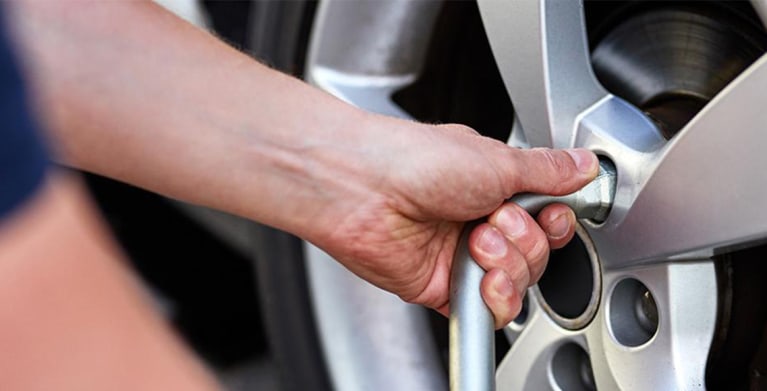Boost Your Drive: Top-Notch GMC Tires Service at Morris Tires
Wiki Article
Tire Service: The Influence of Climate Condition
When it comes to guaranteeing optimum efficiency and security on the roadway, understanding the influence of weather condition conditions on tire service is critical. GMC Tire Service. In this discussion, we will certainly check out the elaborate connection in between climate problems and tire solution, dropping light on the relevance of weather-specific tire maintenance techniques and considerations.Warm and Tire Efficiency
When revealed to high temperatures, tires experience modifications in efficiency that can significantly influence lorry safety and handling. The heat created from long term driving or warm weather condition problems creates the tire rubber to soften, leading to decreased step life and enhanced wear.
Winter Results
Winter conditions can have a significant effect on tire performance and safety and security. As temperature levels decrease, tire rubber can set, leading to reduced traction on icy or snow-covered roadways. In winter, tires might also shed air pressure extra swiftly, which can impact handling and gas effectiveness. In addition, chilly temperatures can trigger tire sidewalls to tense, boosting the danger of damage from potholes or various other road threats.To mitigate the effects of cool weather on tires, it is vital to regularly check tire stress and inflate them to the producer's advised levels. Using winter season or all-season tires created for winter conditions can also enhance traction and grip on icy or snowy roads. Appropriate tire maintenance, including regular evaluations for wear and damages, becomes a lot more vital during chillier months to make certain optimal performance and safety.
Rainy Conditions Effect
During rainy conditions, tire efficiency and safety and security can be significantly influenced by the damp roadway surface areas and minimized exposure. The step pattern of tires plays a crucial function in maintaining grip on wet roads. Tires with worn-out footsteps are a lot more prone to hydroplaning, where a layer of water accumulates between the road and the tire surface area, causing loss of traction. To battle this, motorists need to frequently examine their tires for sufficient tread depth and take into consideration buying tires especially developed for wet conditions.Furthermore, stormy weather can additionally reduce exposure, making it challenging for drivers to see the roadway ahead clearly (GMC Tire Service). In such problems, it is necessary to adjust driving rates as necessary and maintain a secure following distance to enable sudden quits. websites Properly inflated tires can additionally aid in keeping control on wet roads by giving far better handling and hold
Snow and Tire Safety And Security
Snow-covered roadways pose distinct challenges for vehicle drivers, emphasizing the relevance of proper tire choice and maintenance. When driving in snowy conditions, having the appropriate tires can make a considerable distinction in safety and efficiency. Wintertime tires are created with unique rubber substances and walk patterns to provide much better grip on snow and ice compared to all-season tires. The deeper footsteps and sipes of winter season tires aid grip the roadway better, reducing the risk of sliding and moving.
It is crucial to follow supplier instructions when making use of and mounting tire chains to protect against damage to the tires and car. By picking the ideal tires, maintaining proper inflation, and thinking about added traction help like tire chains, motorists can boost their safety when navigating snow-covered roadways.
Weather-Related Tire Upkeep
Weather-related tire upkeep includes a range of techniques aimed at ensuring optimal tire function and durability in various climate circumstances. One key element of weather-related tire maintenance is tire pressure guideline. Inspecting tire walk routinely and changing tires when walk wear reaches a certain depth is essential for keeping grip and stability in unfavorable weather.
Final Thought
In final thought, climate problems have a substantial impact on tire efficiency and safety and security. From warm impacting tire stress and wear to chilly climate decreasing grip, it is necessary to consider the weather when keeping and making use of tires.In this conversation, we will certainly discover the detailed connection between weather condition problems and tire solution, dropping light on the relevance of weather-specific tire maintenance methods and considerations.

Report this wiki page